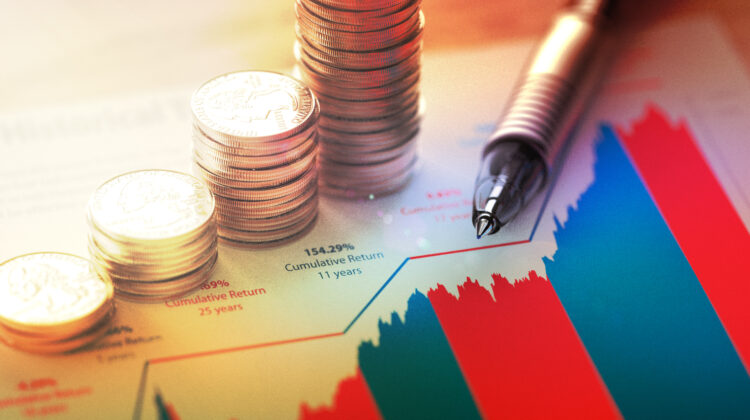How do interest rates affect the economy?
In the realm of economics, few factors hold as much sway over the economy as interest rates. Understanding the multifaceted ways in which interest rates influence economic activities is crucial for policymakers, investors, and individuals alike.
This article explores the intricate mechanisms through which fluctuations in interest rates ripple across various sectors, shaping economic landscapes.
The Dynamics of Interest Rates
Interest rates, the cost of borrowing money, are set by central banks to manage economic growth, inflation, and employment levels.
Lowering Interest Rates to Stimulate Economic Activity: When central banks reduce interest rates, borrowing becomes cheaper, stimulating consumer spending and investment. This injection of liquidity into the economy fuels growth, creating jobs and boosting overall economic activity.
Investment and Capital Flows
Impact on Investment: Lower interest rates incentivize businesses to borrow capital for expansion and investment projects. This surge in investment spurs innovation, productivity gains, and job creation, driving economic growth.
Capital Flows: Changes in interest rates influence international capital flows. Higher interest rates attract foreign investment, strengthening the domestic currency. Conversely, lower rates may lead to capital outflows, weakening the currency.
Consumer Spending Patterns
Effect on Consumer Behavior: Reduced interest rates encourage consumer borrowing for big-ticket purchases like homes and cars. This uptick in spending bolsters demand for goods and services, fueling economic expansion.
Housing Market Dynamics: Low-interest rates drive demand in the housing market, leading to higher home prices and increased construction activity.
Inflationary Pressures
Inflationary Impact: Central banks use interest rates to control inflation. Lower rates stimulate spending, potentially leading to increased demand for goods and services, thereby pushing prices higher. Conversely, higher interest rates can dampen inflationary pressures by curbing spending and investment.
Employment and Wage Growth
Employment Trends: Lower interest rates can spur job creation by incentivizing businesses to invest in expansion and hiring. This boost in employment levels contributes to higher consumer confidence and spending.
Wage Dynamics: As the economy strengthens due to lower interest rates, businesses may face upward pressure on wages to attract and retain talent, leading to broader wage growth.
Government Fiscal Policy
Debt Servicing Costs: Fluctuations in interest rates impact government borrowing costs. Lower rates reduce the burden of servicing existing debt and make new borrowing more affordable, enabling governments to pursue expansionary fiscal policies to stimulate economic growth.
Global Trade and Currency Markets
Exchange Rates: Interest rate differentials between countries influence currency exchange rates. Higher rates attract foreign investment, strengthening the domestic currency, while lower rates may lead to currency depreciation.
Trade Balances: Currency fluctuations driven by interest rate differentials affect a country’s trade balance by impacting export competitiveness and import costs.
Risk Factors and Financial Stability
Asset Bubbles: Persistently low-interest rates may fuel speculative behavior, leading to asset bubbles in housing or financial markets.
Debt Levels: Excessive reliance on low-interest rate environments can contribute to the buildup of debt, potentially posing risks to financial stability during periods of economic stress.
Savings and Investment Behavior
Impact on Savers: Lower interest rates reduce returns on savings accounts and fixed-income investments, prompting savers to seek higher-yielding assets or take on more risk.
Investment Decisions: Investors may pivot towards riskier assets such as equities or real estate in search of higher returns in a low-rate environment.
Central Bank Policy Tools
Monetary Policy Instruments: Central banks utilize various monetary policy tools, including interest rate adjustments, to achieve macroeconomic objectives such as price stability and full employment.
Forward Guidance: Communication by central banks regarding future interest rate policies influences market expectations and investor behavior, shaping economic outcomes.
Conclusion
The impact of interest rates on the economy is profound and far-reaching, permeating through various sectors and influencing individual and institutional decision-making. By comprehending the intricate interplay between interest rates and economic dynamics, stakeholders can navigate prevailing economic conditions with foresight and adaptability.
FAQs
How do interest rates affect mortgage rates?
Lower interest rates typically lead to lower mortgage rates, making homeownership more affordable for prospective buyers.
What happens to bond prices when interest rates rise?
Bond prices generally decrease when interest rates rise, as the fixed interest payments become less attractive compared to newly issued bonds with higher yields.
Do higher interest rates always lead to lower inflation?
While higher interest rates can dampen inflationary pressures by reducing spending, other factors such as supply shocks and demand dynamics also influence inflation trends.
How do interest rates impact stock market performance?
Interest rate changes can affect stock market sentiment and valuation, with lower rates generally providing a boost to equity prices due to reduced borrowing costs for businesses and consumers.
What role do expectations play in interest rate decisions?
Market expectations regarding future interest rate movements play a significant role in shaping investor behavior, influencing asset prices and economic outcomes.
How do central banks determine the appropriate level of interest rates?
Central banks assess various economic indicators such as inflation, employment, and GDP growth to gauge the need for monetary policy adjustments, aiming to achieve their policy objectives effectively.



